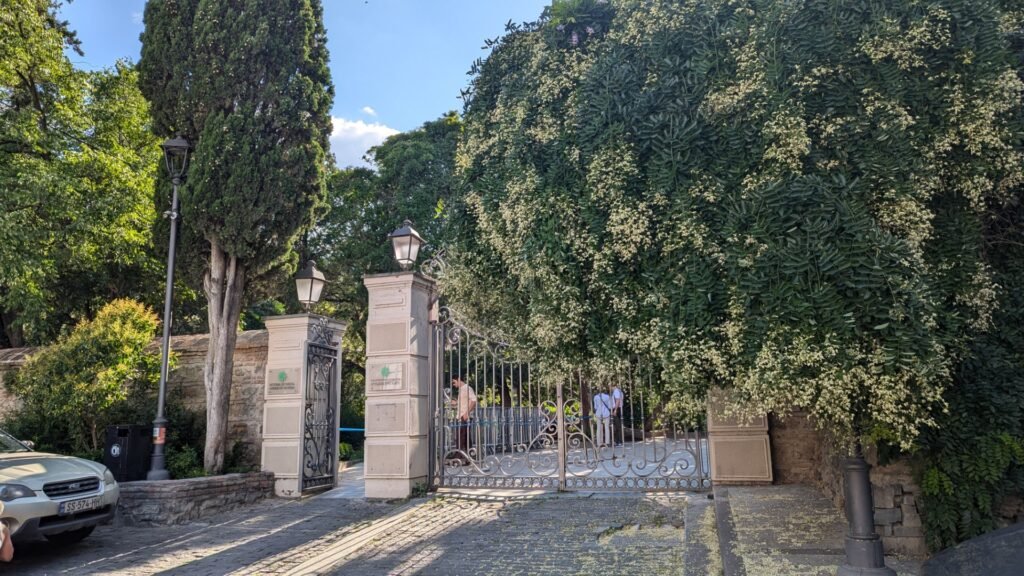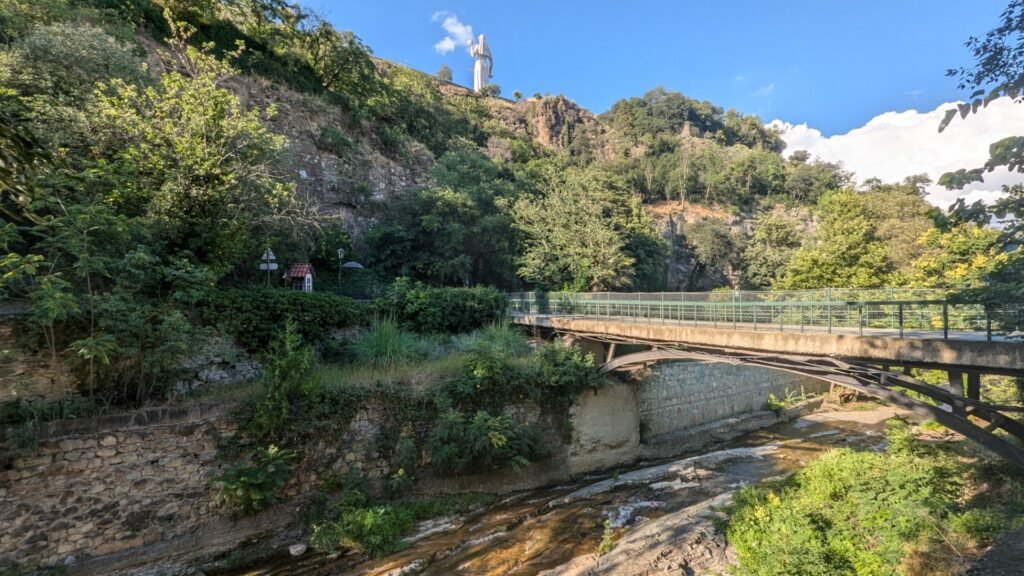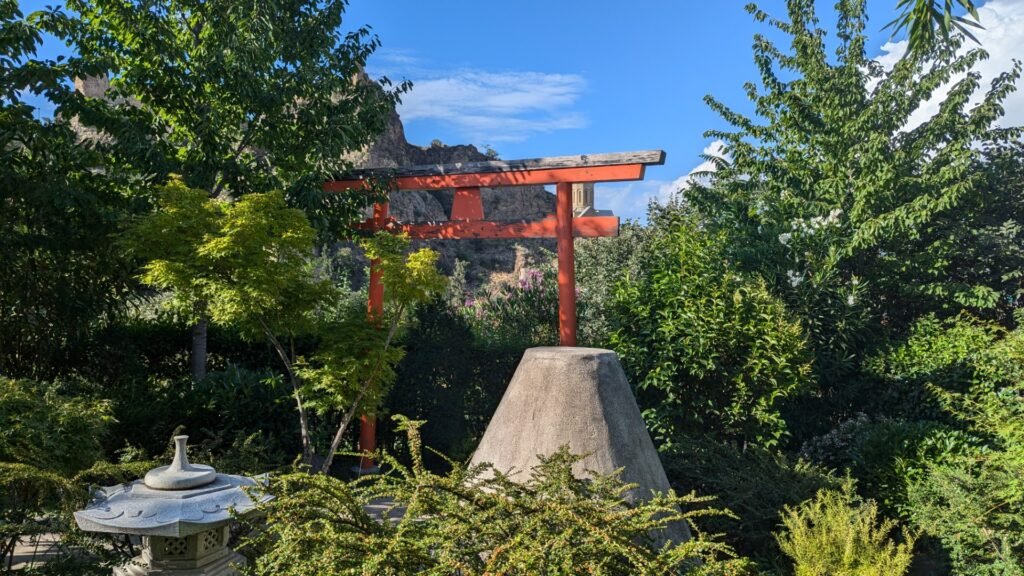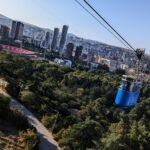Located in the beautiful Tsavkisistskali River in the southern part of Tbilisi, National Botanical Garden of Georgia (formerly Tbilisi Botanical Garden) is a lovely haven that presents the country’s botanical wealth. With more than three centuries of history, this big garden gives visitors an opportunity to see plant collections from Georgia and around the world.
The Botanical Garden of Tbilisi 🌼🌻🌷
- Daily open from 9 AM–7:30 PM
- Adults: 4 ₾
- Students: 1 ₾
- Schoolchildren: 0.50 ₾
- Children under 6: free
- Excellent Air Quality
Offical Link: https://nbgg.ge/
The central entrance, situated at the foothills of the Narikala Fortress, serves as the main access point to the garden. From being a royal garden for the royal family, later Tbilisi Treasury Garden and Fortress Garden, the botanical garden has turned into a leading institution for plant conservation and research. The historical development of botanical gardens played a big role in plant conservation and establishment of international cooperation with other botanical gardens. Today it occupies a big territory with plenty of plants, including medicinal plants, Caucasus plants and beautiful Japanese garden.
Whether you are a nature lover, history fan or just looking for a peaceful retreat, Tbilisi Botanical Garden is a journey through Georgia’s natural heritage.

Tbilisi Botanical Garden - More than 300 years of History
Tbilisi Botanical Garden has more than 300 years of history. It started in 1625 as royal gardens for the royal family, historically known as ‘fortress gardens’ due to its significance and survival through various invasions. Later it evolved and changed names, became Tbilisi Treasury Garden and then Fortress Garden.
- In 1845 it was officially established as Tiflis Botanical Garden and soon gained reputation for its plant collections. French traveler Jean Chardin and Prince Vakhushti Bagrationi mentioned the garden in their scientific works. The garden was even on the first Tbilisi map composed by Prince Vakhushti in 1735.
- In the late 19th century the garden was expanded and a former Muslim cemetery was incorporated into the territory. Several graves from that time are still in the garden, including the famous Azerbaijani writer Mirza Fatali Akhundov. These historical remnants add cultural value to the garden’s overall beauty.
- Today visitors can see the historical monuments in the garden, like ancient walls and irrigation system that once watered the plants. These tangible pieces of the past give us a glimpse into the garden’s long and interesting history.

National Botanical Garden of Georgia Today
Today National Botanical Garden of Georgia is a symbol of the country’s botanical wealth and conservation. Historically it was a fortress garden, which was important in the region and mentioned in 18th century garden maps and travelers’ notes. Located in the Tsavkisistskali River gorge the garden is waiting to be explored. You can enter through the main entrance, which is near the historic Narikala Fortress or take a cable car from Rike Park and enjoy the stunning views of the garden and the city.
Botanical Paradise: Plant Collections and Thematic Gardens
A paradise for plant lovers and nature enthusiasts the garden has over 4,500 taxonomic groups of plants, from Caucasus and beyond. Walk along the winding paths and explore the themed gardens, each with its own beauty and character. Get lost in the Japanese Garden where pruned shrubs, ponds and traditional architecture will transport you to Japan. Enjoy the colors and scents of the rose garden, a sensory delight that blooms during the summer. And for those who want to learn more about Georgian botanical treasures the dendrological museum will give you a glimpse into the country’s unique plant world.
Conservation and Education: Saving Georgian Flora for the Future
The garden is committed to education and research. On site nursery is propagating and conserving rare and endangered plant species for the future. You can learn about the garden’s scientific works and how they contribute to plant diversity and conservation.
As you walk through the garden’s different landscapes you’ll see remnants of its past, several graves from the time when it was a Muslim cemetery. These historical markers remind us of the garden’s layered past and its connection to Tbilisi’s cultural heritage. The ancient irrigation system that once watered the plants is another proof of the garden’s importance. Whether you are fascinated by the flowers, interested in historical monuments or just looking for a peaceful place in nature the National Botanical Garden of Georgia will give you an unforgettable experience and you will leave with a new appreciation for the plant world.

Tips for Visiting
Visiting National Botanical Garden of Georgia is an adventure but here are few tips to help you and make the most of this green oasis. Check the Tbilisi map to get familiar with the garden’s layout.
Plan Your Botanical Trip
Before you enter this green heaven check the Tbilisi map and get familiar with the garden’s layout. The main entrance is at the foot of the Narikala Fortress and is marked with a big stone arch. Or take the cable car from Rike Park and enjoy the aerial views of the city and the garden.
If you are short of time or want a more structured experience guided tours are available with knowledgeable guides who will show you the garden’s hidden gems and history. If you want some adventure the zip line is a great way to cross the garden’s rough terrain and get a unique view of the garden.
Practical Tips
- Dress comfortably: Wear comfortable shoes as you will be walking a lot. The garden’s terrain can be uneven in some places so sturdy shoes are recommended.
- Bring water: Bring a water bottle to stay hydrated especially during the summer.
- Protect yourself from the sun: Wear a hat and sunscreen.
- Pack a snack: If you plan to spend few hours in the garden bring a light snack or picnic lunch.
- Respect the environment: Stay on the paths to not damage the plants and don’t litter.
- Enjoy the experience: Take your time to see, hear and smell the garden. Pause to listen to the birds, inhale the flowers and admire the details of the plants.
By following these tips you will have a great time at National Botanical Garden of Georgia.
Our honest conclusion about the Tbilisi Botanical Garden
To summarise, the National Botanical Garden of Georgia is a living testament to the country’s rich botanical heritage and its unwavering commitment to conservation. The most important thing, of course, is that you can really chill out and relax here. The recreational area in the centre of the city surprises with its great air quality. From its humble beginnings as a royal garden to its current status as a renowned scientific institution, the garden has played an important role in the conservation and presentation of Georgia’s diverse flora. Whether you are drawn to the historical monuments, fascinated by the diverse plant collections or simply want to escape the hustle and bustle of the city, the garden offers an enriching experience for visitors of all ages and interests.
So, what are you waiting for? Plan your visit to the National Botanical Garden of Georgia today and immerse yourself in the beauty and wonder of nature. Discover the hidden treasures found throughout the sprawling grounds, learn about the fascinating history and scientific endeavours that have shaped the Garden’s development, and create lasting memories in this enchanting oasis.
Tbilisi Botanical Garden – FAQ
The garden is in Tsavkisistskali Gorge, south of Sololaki Range in Tbilisi. It’s close to the city center.
You can enter from the main entrance near Narikala Fortress or take the cable car from Rike Park.
The garden is open daily from 9:00 AM to 5:30 PM, including weekends and holidays.
Explore plant collections, walk through themed gardens like Japanese Garden, see historical monuments and learn about Georgian flora.
Yes, guided tours are available for those who want to have more structured experience of the garden’s history and plants.
Yes, the garden has touch gestures and double-tap features for visually impaired visitors and most of the area is wheelchair accessible.














